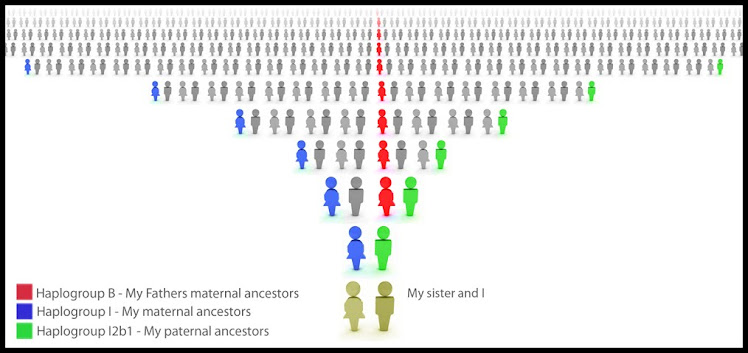The following are my highlights/notes from her very worthwhile presentation. I hope you will be as surprised by some of her insights as I was.

Preservation of records - general rules to prevent damage and reduce deterioration:
0. - If what you are planning to do isn't reversible - then simply don't do it!
1. Lower temperatures - keep them cool.
2. Lower humidity - keep them dry
3. Low light - keep them in the dark
4. Low air pollutant levels -
Foxing - records with rust looking stains from higher humidity
Mold & Insects also cause deterioration and damage
Confusing and Clearer Preservation Terms:
"ARCHIVAL" - it actually has no meaning from a presevation standpoint and is primarily for mere advertising to convince you that some product is better than another.
"ACID FREE" - not a good term because no sold paper or sleeve or folder is completely free of substances that deteriorate over time. Wood pulp with high cellulose makes paper that can last longer naturally, but it still deteriorates.

Better Materials to Use:
Polyester is a good example and Gaylord and Hollanger both sell preservation materials that are reliable in these two regards (Chemical Inert and Stable).
Beware of general plastic especially if it designed for long term storage of food products. i.e; baggies and cellophane, etc.
Acid Free Folders, Acid Free Document Boxes, Other Ideas:
The Container Store sells some pricey materials labelled "Archival"
New Terms: "Buffered vs. Unbuffered" - buffered adds recyclable materials to reduce acid levels, but alkaline issues can be problematic - pH is a delicate balance. Unbuffered has cellulose only so it is best. Acetic acid was mentioned several times by Pamela which is essentially vinegar in various pH concentrations. A difference of just a few % strength can mean a world of difference with paper, folder, and even cardboard deteriorating more quickly.
FAMILY PHOTO PRESERVATION:
Black and White photos are more stable and usually fine to last a long time when not interfered with by other adjacent less stable materials.
Color photographs, however, are problematic due to the vast array of less stable ingredients used in the various dyes so Copy/scan & digitize them for longer preservation options. You may want to modify scanned color images with the MSO Picture Manger back to black and white and save under a slightly different name, print and file that if you like - this is incredibly easy on most recent computers. Below are two images as an example of one of my compilation images switched to B & W which took only about five seconds to modify and save:
Image Permanence Institute - dates back to early Kodak history see also Rochester Institute of Technology.
Storing Portraits:
Polyester L sleeves - top and side open for less restrictive storage and easier access to documents within.
Polypropylene is good too.
Problems Old Photo Albums:
#1. DO NOT EVER FIRST TAKE AN ALBUM APART BEFORE TAKING PICTURES OF HOW ANY ALBUM IS SET UP. THIS IS KEY TO PRESERVE THE ORIGINAL ORGANIZERS METHODOLOGY AND STORY THEY INTENDED TO TELL WITH THE ARRANGEMENT.
(This is where Thomas MacEntee would plug the remarkable usefulness of the Flip-Pal scanner as well)
Preserving Books:
Keep in original format - spines are biggest hurdle to scanning and preservation efforts.
Box them for protection - several companies sell custom sized versions just for books.
Shelving Books:
Keep Same or similar sizes together for support.
Store large volumes flat for stability.
Over sized items (Maps, blueprints, large family tree charts, etc):
$465 will get you a 41 inch wide five drawer cabinet at the time this article was published and that is a cheap one: 



These are pricey flat storage cabinets with large to huge drawers, but for a more typical budget...
1. Roll these items loose with a larger diameter and wrap with plastic and tie for protection.
2. Always avoid folding oversize items when possible because deterioration is often accelerated along any creases/folds.
Magnetic media storage (Cassette and VHS tapes):
These are short term options with a life expectance of about 20 years even when professionally done - not at home.
Technological Obsolescence: - outdated Floppy Diskettes went by the wayside too
Electronic Media: - even worse
Physical Item is fragile and damage to it could be a total loss
CDs & DVDs - Archival Gold CD & DVR:
Pamela hadn't heard of the Millenniata M Discs to my surprise, but who of us will even be around to know if they work in 1,000 years?
American Intuition for Conservation





No comments:
Post a Comment